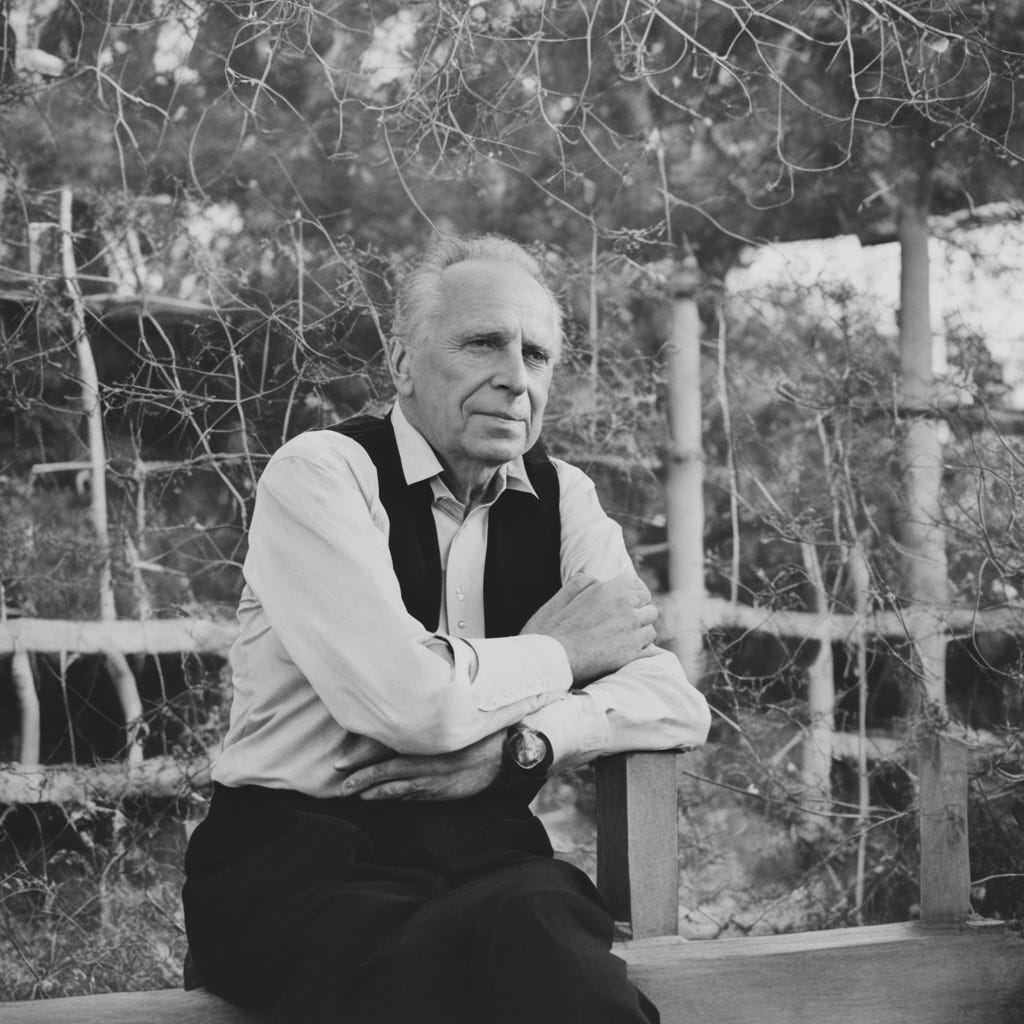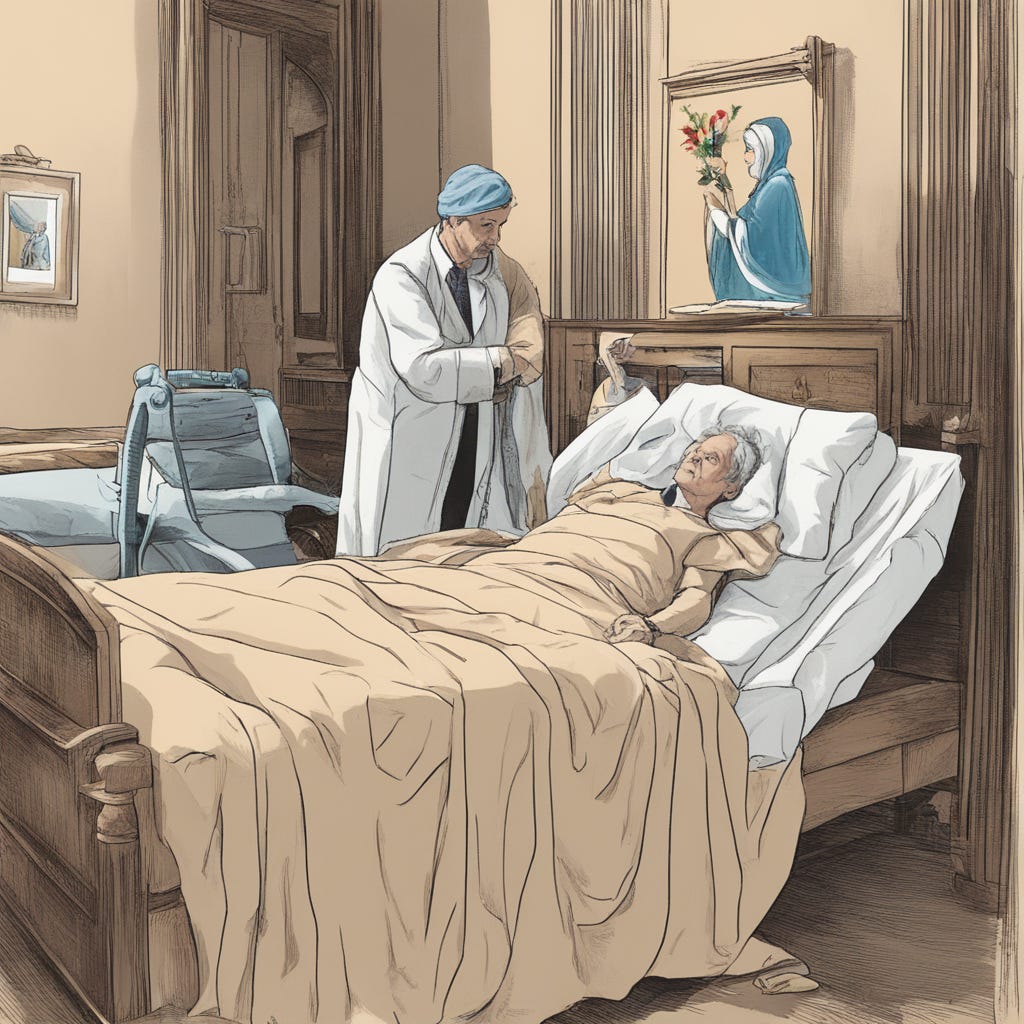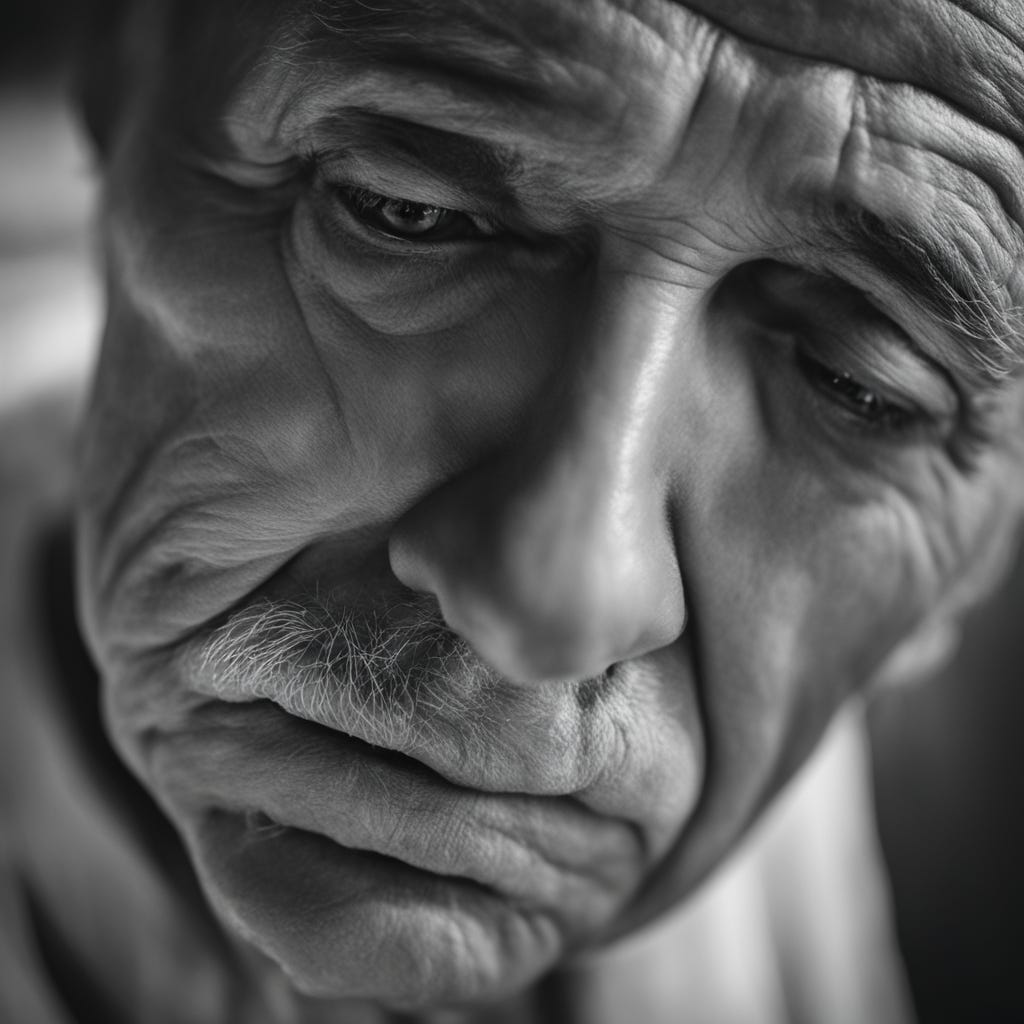Assisted Suicide's Disturbing Growth in North American Culture
"Death Panels" making a comeback... disturbing trends in Canada... coming to USA soon?
Anyone remember the somewhat feckless Sarah Palin, former governor of Alaska and recently-failed US House candidate?
One of the most memorable aspects of the 2009 nationwide debate about government healthcare programming (e.g., ‘Obamacare,’ and offering coverage for the uninsured) was the term “Death panels,” memorably brought up by the erstwhile Alaska governor.
The idea behind the term was actually was rather effective as a political matter - and quickly gained traction and was used to evoke an image of faceless bureaucrats rationing health care and sentencing the elderly and the infirm to death. No wonder - for Americans at least, we have a longstanding suspicion of both big government, and an aversion (likely rooted in long-held Christian tradition) of the idea of suicide as being societally sanctioned or acceptable in any way.
Despite that, both Sarah Palin and her use of the term “death panels” was derided widely in the media (was deemed the 2009 “Lie of the Year” by the “nonpartisan” Polifact). She was eventually hounded into obscurity.
The Right to Suicide
To be fair - I personally believe we have a fundamental right to suicide – and I’ve always found bizarre the idea that suicide itself could be illegal. One of my personal heroes, the late Syracuse University emeritus Professor of Psychiatry, the irascible Thomas Szasz, also agreed with this – but at the same time, had a longstanding aversion and opposition to the idea of physician-assisted suicide, a position I for years found rather confusingly nuanced.
Basic idea Szasz had was that while the individual, fundamental human right to suicide is obvious and fundamental (and laws against it are philosophically absurd and often inhumane in application), physician assisted suicide, like the version that the infamous “Doctor Death” - Dr. Eric Kevorkian pioneered, was fraught with peril - arguing from the standpoint of assisted suicide invariably having the effect of corrupting the traditional role of physicians as healers, and potentially leading to all sorts of potentially troublesome knock-on effects. But more on that later.
For my part – regarding the above point, while I get this idea, that medical doctors and medical professionals writ large should restrict themselves to the role of looking out for the best interests of their patients, and that assisting suicide may be counter to that – I guess I always thought the self-defined best interests of a patient were always paramount. If, say, a person of sound mind truly felt that the amount of suffering they are in, whether physical, mental, or otherwise, exceeded the benefit they got out of living – then it would not be unethical, strictly speaking, for a trained medical professional to assist a person in ending their life as effectively and painlessly as possible.
The other issue with physician-assisted suicide (don't recall how much Szasz explicitly stated this) was about the large, and these days – increasingly central role government plays in the financing, coordination, administration, and regulation of medical care and practice.
Fortunately for Dr. Szasz (but unfortunately for us) – he did not live to see the genesis of the 2008 Affordable Care Act, or ACA (the most significant expansion of government into the healthcare market likely since Medicare). Most significantly – he did not live to see the utterly massive event which I like to call the Great Coronapanic – essentially a massive, unprecedented 'power grab' by the medical establishment and government, in the name of “public health.”
This has implications for the physician-assisted suicide issue.
Physician-Assisted Suicide in North America
Physician-assisted suicide, along with so-called euthanasia (a polite term for medical homicide) is legal in various European countries (the Netherlands has euthanasia) – but since I'm American, I'll focus on North America.
In Canada, with the advent of Medical Assistance In Dying (MAID) in 2016, and it’s expansion in 2021 to apply to the disabled and chronically ill - the representative demographic of it’s end-user / “customer” has been one trending steadily in the direction of an older population.1
As the demographics of MAiD have trended towards the elderly and chronically ill - the overall numbers of MAiD “customers” have been sharply on the rise - in 2022, there were 13,241 MAiD provisions in Canada, bringing the total number of medically assisted deaths in Canada since 2016 to 44,904. Just under 30% - almost a third of the total number of MAiD provisions - occurred just last year.
Over the past few years as the MAiD program up north has rapidly expanded, the Pew Research Center has tracked American attitudes towards physician-assisted suicide, have slowly softened in favor of the practice since 2005 - although there remains much division.
According to a Pew Research Center survey conducted in 2013, 47% of U.S. adults approved of laws that would allow medical doctors to prescribe lethal doses of drugs for terminally ill patients who choose to commit suicide, while 49% disapproved of such law.2 However, when the polling firm Roper surveyed the public again about this question in 2019, support for physician-assisted suicide, at least for those with terminal illness, rose to over 60%.
“Medical Aid in Dying” in the United States
In the United States, physician-assisted suicide, more typically euphemistically referred to as “medical aid in dying” or even “death with dignity,” is actively legal, or has laws on the books making their way through the courts in 11 states - California, Colorado, District of Columbia, Hawaii, Maine, Montana, New Jersey, New Mexico, Oregon, Vermont, and Washington.
Although getting actual comprehensive numbers are difficult - it’s worth noting that physician-assisted suicide has been legal in the United States almost 20 years longer than in Canada, with the first assisted suicide being performed in the state of Oregon, in 1997 - apparently on an 85 year woman with metastatic breast cancer, who was prescribed lethal medication that she voluntarily took herself.
Since 1997, although official numbers aren’t available, according to a report by Compassion & Choices, in the United States, across all authorized jurisdictions that report data, 6,378 individuals have chosen to use medical aid in dying to peacefully end intolerable suffering up until 2023. This compares to Canada, which has had nearly 45,000 since 2016 - a six-fold per capita difference in utilization of their “assisted suicide” law.
So essentially - in Canada, compared to the United States, assisted suicide is a runaway hit, with a fast-growing customer base. In the US, by comparison, the market is much smaller, apparently… and stagnant. Why is this?
Differences & Similarities between the US and Canada
In terms of the 11 states that have assisted suicide laws, versus Canada’s MAiD, the US’s rollout of assisted suicide has been much more restrained.
To begin with, obviously, while 11 US States have assisted suicide, the other 39 do not. In Canada - MAiD is national.
Also, one of the major differences between the US legal regime (at least as it’s represented in the 11 states that have rolled it out) and that of Canada is that in Canada - MAiD users can be directly administered life-ending drugs by the doctors or nurses helping them. In other words, while in the US, assistance from doctors and medical professionals is strictly limited to helping users obtain their life-ending drugs.
In Canada - doctors are allowed to “directly administer… a substance that causes death, such as an injection of a drug. This is sometimes called clinician-administered medical assistance in dying.”
In other words, in Canada - they allow medical professionals to kill patients.
Obviously, compared to the United States - Canada has been the country with the fastest growth and biggest rollout of suicide-as-an-industry.
Why is this?
For sure, there’s been indication since the late 80s that Canadians don’t see suicide nearly in as taboo a light as their American counterparts, as a 1989 study in the journal Suicide and Life-Threatening Behavior, where researchers found substantial difference in attitude between Canadian and US college students towards suicide, in that “Canadian college students perceive suicide as part of everyday life, not to be explained by recourse to religious, personality, or psychopathological constructs.” The authors went on to hypothesize that Canadians’ permissive attitudes about suicide may have something to do with “differences in Canada and the United States can best be explained by the various ways in which Canadians and Americans settled their respective frontiers”…. who knows.
Aside from this…. there’s something standing in this room with us we need to acknowledge.
Canadian Single-Payer Healthcare
Yes, I’m going to go there.
In Canada, the share of citizens aged 65 and older is projected to reach 23.4% of the population by 2040. Per-person healthcare spending for this group is more than double the national average, accounting for a staggering 71.4% of health-care expenditures by 2040. For these reasons alone - a substantial, if not primary reason for the dire straits the Canadian healthcare system is in, is because of the aging of the population.
Unlike in the United States, which still retains some hazy, vestigial shadows of a market healthcare system (albeit very hazy), the Canadian healthcare system entirely depends on taxpayer contributions (outside of the few wealthy enough to spend on private healthcare).
This leads to the question - and one I’ve been thinking about a lot lately - does a single-payer healthcare system create a perverse incentive for the government to encourage assisted suicide?
When the government bears the financial responsibility for citizens' healthcare, the cost of long-term care for individuals with severe illnesses or disabilities becomes a significant economic consideration. In an attempt to manage healthcare expenditures, might policymakers be tempted to subtly promote or condone assisted suicide as a cost-saving measure, steering vulnerable individuals toward a premature end rather than p3roviding expensive ongoing care….?
It’s worth noting that MAiD in Canada continues to expand it’s criteria for eligibility. While initially, you could get assisted suicide for being at the end of life - as of March 17, 2021, now assisted suicide is available for the non-terminal, chronically ill - which basically describes most nursing home patients.
Is This Our Future?
It’s well-known that “single payer healthcare” is a goal of the progressive left and central planners in the USA and elsewhere - supposedly a sign of a “civilized” society.
The Canadian system has single-payer healthcare now, government healthcare where the doctors and nurses are employees of the government, and the government has a financial incentive to contain their costs.
They don’t just perform assisted suicide like the USA, where they supply the pills or medicines so patients can do it themselves - Canadian doctors and nurses will, if needed, kill you themselves. They do it if you’re dying, but also even if you’re not - if you’re merely chronically ill (as many elderly are). Soon, you can be killed by the Canadian healthcare system for being mentally ill - but perfectly physically healthy.
I feel like we’re hurtling towards a point of no return in North America.

In the Journal of Canadian Geriatics, physician Deborah Selby & her co-authors do a good job describing what the current crop of MAID users are increasingly looking like - in 2019, the majority of MAiD recipients were 65–80 years old (45.9%), but over a third (34.7%) were over the age of 80. Patients over the age of 65 accounted for 80.6% of all cases from June 2016 to the end of 2019.
The study referenced by Pew distinguishes helpfully between the idea of a right to die - that is to say, the idea that people should have the right to have lifesaving medically supportive measures withdrawn if they choose to (even if doing so ends their life) - something that has overwhelming support from most Americans, and right to physician assisted suicide - which the public remains split on.
Even more disturbing, Canada is planning on enabling physician assisted suicide for people whose sole medical illness is psychiatric - such as major depression.










Being untreated for severe pain post several spine surgeries, the govt & physicians rather me disabled than appropriately treated; robbing me of any meaningful life. I will kill myself & the method cannot fail because being worse off is not my goal. Ideally having access to lethal medication vs a method that can fail or inadvertently hurt someone due to method used if ie drive off bridge & EMS rescuers attempt to recover body, etc. By failing patients imo every pt driven to suicide is on the hands of the idiotic and cruel medical community torturing patients.
Soilent Green.